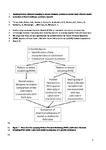Applying Pattern Oriented Sampling in current fieldwork practice to enable more effective model evaluation in fluvial landscape evolution research
| dc.contributor.author | Briant, RM | |
| dc.contributor.author | Cohen, KM | |
| dc.contributor.author | Cordier, S | |
| dc.contributor.author | Demoulin, A | |
| dc.contributor.author | Macklin, MG | |
| dc.contributor.author | Mather, Anne | |
| dc.contributor.author | Rixhon, G | |
| dc.contributor.author | Veldkamp, A | |
| dc.contributor.author | Wainwright, J | |
| dc.contributor.author | Whittaker, A | |
| dc.contributor.author | Wittmann, H | |
| dc.date.accessioned | 2018-08-30T15:18:35Z | |
| dc.date.issued | 2018-11-05 | |
| dc.identifier.issn | 0197-9337 | |
| dc.identifier.issn | 1096-9837 | |
| dc.identifier.uri | http://hdl.handle.net/10026.1/12208 | |
| dc.description.abstract |
<jats:title>Abstract</jats:title><jats:p>Field geologists and geomorphologists are increasingly looking to numerical modelling to understand landscape change over time, particularly in river catchments. The application of landscape evolution models (LEMs) started with abstract research questions in synthetic landscapes. Now, however, studies using LEMs on real‐world catchments are becoming increasingly common. This development has philosophical implications for model specification and evaluation using geological and geomorphological data, besides practical implications for fieldwork targets and strategy. The type of data produced to drive and constrain LEM simulations has very little in common with that used to calibrate and validate models operating over shorter timescales, making a new approach necessary. Here we argue that catchment fieldwork and LEM studies are best synchronized by complementing the Pattern Oriented Modelling (POM) approach of most fluvial LEMs with Pattern Oriented Sampling (POS) fieldwork approaches. POS can embrace a wide range of field data types, without overly increasing the burden of data collection. In our approach, both POM output and POS field data for a specific catchment are used to quantify key characteristics of a catchment. These are then compared to provide an evaluation of the performance of the model. Early identification of these key characteristics should be undertaken to drive focused POS data collection and POM model specification. Once models are evaluated using this POM/POS approach, conclusions drawn from LEM studies can be used with greater confidence to improve understanding of landscape change. © 2018 John Wiley & Sons, Ltd.</jats:p> | |
| dc.format.extent | 2964-2980 | |
| dc.language | en | |
| dc.language.iso | en | |
| dc.publisher | Wiley | |
| dc.subject | landscape evolution modelling | |
| dc.subject | Pattern Oriented Sampling | |
| dc.subject | catchments | |
| dc.subject | fluvial systems | |
| dc.subject | geological field data | |
| dc.title | Applying Pattern Oriented Sampling in current fieldwork practice to enable more effective model evaluation in fluvial landscape evolution research | |
| dc.type | journal-article | |
| dc.type | Conference Proceeding | |
| plymouth.author-url | https://www.webofscience.com/api/gateway?GWVersion=2&SrcApp=PARTNER_APP&SrcAuth=LinksAMR&KeyUT=WOS:000452564400010&DestLinkType=FullRecord&DestApp=ALL_WOS&UsrCustomerID=11bb513d99f797142bcfeffcc58ea008 | |
| plymouth.issue | 14 | |
| plymouth.volume | 43 | |
| plymouth.publication-status | Published | |
| plymouth.journal | Earth Surface Processes and Landforms | |
| dc.identifier.doi | 10.1002/esp.4458 | |
| plymouth.organisational-group | /Plymouth | |
| plymouth.organisational-group | /Plymouth/Faculty of Science and Engineering | |
| plymouth.organisational-group | /Plymouth/Faculty of Science and Engineering/School of Geography, Earth and Environmental Sciences | |
| plymouth.organisational-group | /Plymouth/REF 2021 Researchers by UoA | |
| plymouth.organisational-group | /Plymouth/REF 2021 Researchers by UoA/UoA14 Geography and Environmental Studies | |
| plymouth.organisational-group | /Plymouth/Research Groups | |
| plymouth.organisational-group | /Plymouth/Research Groups/Marine Institute | |
| plymouth.organisational-group | /Plymouth/Users by role | |
| plymouth.organisational-group | /Plymouth/Users by role/Academics | |
| dcterms.dateAccepted | 2018-06-11 | |
| dc.rights.embargodate | 2019-6-26 | |
| dc.identifier.eissn | 1096-9837 | |
| dc.rights.embargoperiod | Not known | |
| rioxxterms.versionofrecord | 10.1002/esp.4458 | |
| rioxxterms.licenseref.uri | http://www.rioxx.net/licenses/all-rights-reserved | |
| rioxxterms.licenseref.startdate | 2018-11-05 | |
| rioxxterms.type | Journal Article/Review |


